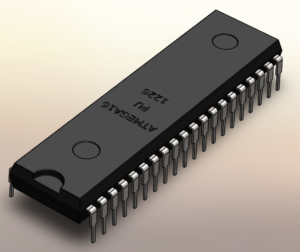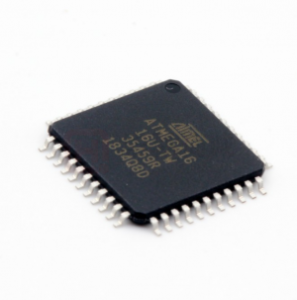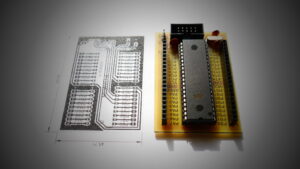Posts Tagged ‘leer MCU cifrado ATmega16 Heximal’
 Unlock Encrypted MCU ATmega16 Heximal
Unlock Encrypted MCU ATmega16 Heximal
Unlock Encrypted MCU ATmega16 Heximal will need engineer to attack atmega16 microcontroller protection system then readout embedded source code from atmega16 microprocessor flash memory;

Unlock Encrypted MCU ATmega16 Heximal will need engineer to attack atmega16 microcontroller protection system then readout embedded source code from atmega16 microprocessor flash memory;
The EEPROM Address Registers – EEARH and EEARL – specify the EEPROM address in the 512bytes EEPROM space. The EEPROM data bytes are addressed linearly between 0 and 511. The initial value of EEAR is undefined. A proper value must be written before the EEPROM may be accessed.
For the EEPROM write operation, the EEDR Register contains the data to be written to the EEPROM in the address given by the EEAR Register. For the EEPROM read operation, the EEDR contains the data read out from the EEPROM at the address given by EEAR.

desbloquear cifrado MCU ATmega16 heximal necesitará ingeniero para atacar atmega16 microcontrolador sistema de protección a continuación, leer código fuente embebido de atmega16 microprocesador de memoria flash
The EEMWE bit determines whether setting EEWE to one causes the EEPROM to be written. When EEMWE is set, setting EEWE within four clock cycles will write data to the EEPROM at the selected address If EEMWE is zero to copying atmega165 mcu firmware, setting EEWE will have no effect. When EEMWE has been written to one by software, hardware clears the bit to zero after four clock cycles.

Unlock Encrypted MCU ATmega16 Heximal will need engineer to attack atmega16 microcontroller protection system then readout embedded source code from atmega16 microprocessor flash memory
The EEPROM Write Enable Signal EEWE is the write strobe to the EEPROM. When address and data are correctly set up, the EEWE bit must be written to one to write the value into the EEPROM. The EEMWE bit must be written to one before a logical one is written to EEWE, otherwise no EEPROM write takes place. The following procedure should be followed when writing the EEPROM (the order of steps 3 and 4 is not essential):
- Wait until EEWE becomes zero
- Wait until SPMEN in SPMCR becomes zero
- Write new EEPROM address to EEAR (optional)
- Write new EEPROM data to EEDR (optional)
- Write a logical one to the EEMWE bit while writing a zero to EEWE in EECR
Within four clock cycles after setting EEMWE, write a logical one to EEWE by breaking atmega16 microcontroller fuse bit;